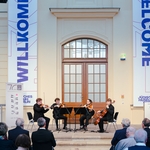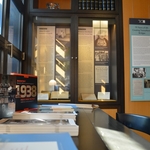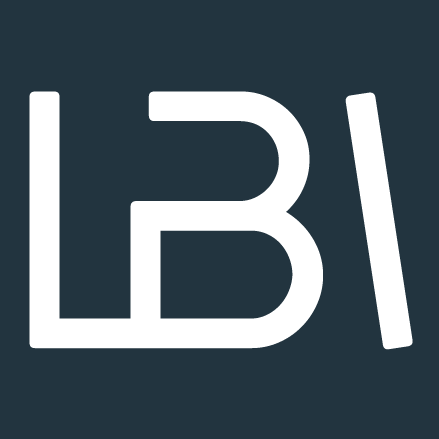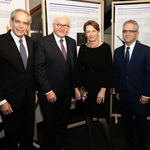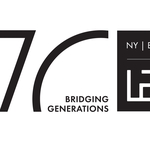Preserving Yesterday’s News with the CJH and Frankfurt University Library
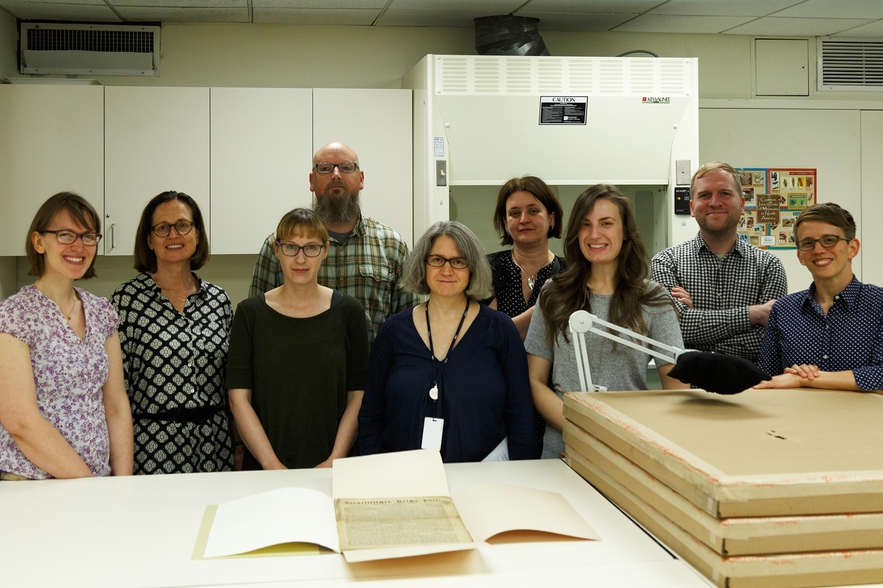
- Autor
- Annedore Wilmes
- Datum
- Di., 3. Okt. 2017
“Nothing is as old as yesterday’s newspaper,” goes the old bromide. Many of the newspapers preserved in the collections of the LBI are in fact more than a century old, and few other media in the library world show the ravages of time like newspapers, which were practically designed to be disposable. That makes digitizing them as tricky as it is urgent.
The LBI digitized 130 periodical titles in 2016 and is working toward the digitization of a further 60 rare titles encompassing 70,000 pages in 2017. That is a fraction of LBI’s 1600 titles, encompassing some 4,000 volumes. Physical copies of about 700 of those titles are stored at LBI, and the remaining 900 are stored on microfilm.
The LBI’s Director of Collections, Renate Evers, heads up the project team, which also includes Associate Librarian for Cataloging and Periodicals Tracey Felder and Collections Care Coordinator Lauren Paustian. Together, they identify titles that meet the criteria of the digitization project’s chief external partner, the University Library in Frankfurt. First they determine whether the title has been digitized elsewhere, and if not, they evaluate it based on a host of other measures including the quality of the paper and the completeness of the series.
Periodicals that make the cut get moved from the LBI’s stacks on the 12th floor of the Center for Jewish History in Manhattan to the basement, which houses the Shelby White & Leon Levy Archival Processing Laboratory. There, project coordinator Sarah Glover inspects the copies very closely, noting irregularities like a name change of the publication, torn corners, or missing pages.
Even under ideal conditions, newspapers degrade over decades to become yellowed and brittle. They often tear at the folds, and prior owners’ attempts to remedy this, for example with tape, can accelerate the degradation by introducing acidic materials to the preservation environment. “We can repair normal tears along the fold,” explains preservation expert Claire Kenny, “but not when someone has already tried to tape them.” Kenny works in the CJH’s Werner J. and Gisella Levi Cahnman Preservation Laboratory, which is akin to an ICU for paper products. To project the original copies when they return to the LBI’s stacks, she and her colleague Katherine Fanning build custom enclosures out of cardboard.
After their physical condition is stabilized, the papers move down the hall to the Gruss Lipper Digital Laboratory, where photographer Shayna Marchese or Digital Services Manager Jennifer Rodewald put them under the cameras. Other team members process and crop the images before uploading them into the Digital Asset Management System, which eventually serves them up to web users. Microfilm copies are also made from the digital images to ensure the long-term preservation of the content, since the originals will eventually decompose no matter what.
The papers that pass under Marchese’s lens in the lab reflect a broad spectrum of periods and subjects. In addition to the long-lived newspapers and magazines that can encompass hundreds of issues, there are rare special issues and Jewish Community newsletters that are short in length but rich in information about communal life.
Some of the titles addressed niche audiences, like Das Echo: Revista democratica cultural en idioma aleman, a Germanlanguage bi-monthly published in Bolivia, or Das Band¸ a magazine for deaf Jews. Some are exceedingly old and rare, like the ten issues of Ha-Me’ asef, founded in 1783 in Königsberg by the prominent figure of the Jewish enlightenment Isaak Euchel.
Although its publication was interrupted several times due to a lack of funds and circulation never exceeded the hundreds, the paper was considered the top journal of the Jewish Enlightenment in German-speaking countries and beyond.
Many of the digitized periodicals served an educational purpose. Das Jüdische Zentralblatt printed popular essays by Jewish, (and some Christian) scholars and theologians. It was founded by Moritz Grünwald in 1882, when he was rabbi in Belovar, Croatia. The Israelitische Predigt- und Schulmagazin, a journal “for all faithful followers of Judaism,” appeared in three volumes between 1834 and 1836. The publisher, Ludwig Philippson, another important figure in the Jewish Enlightenment, promoted Jewish education and historical knowledge by printing articles on topics like the philosophy of Maimonides or the persecution of Jews in Spain and Portugal.
Periodicals are a paradox. They are not as thorough or as exhaustive as books, and their character as a source of timely information means they are not designed to last. For historians, however, it is precisely the greater immediacy of newspapers that makes them so valuable. Through their diversity and their informational alacrity, the newspapers preserved by the LBI offer insights into the flow of information in Jewish communities as well as specific Jewish cultural, political, and religious milieus. Luckily, the staffs of the LBI and the CJH are working hard to avert the disappearance of these rich sources and provide broad access to them.
Aktuelles
